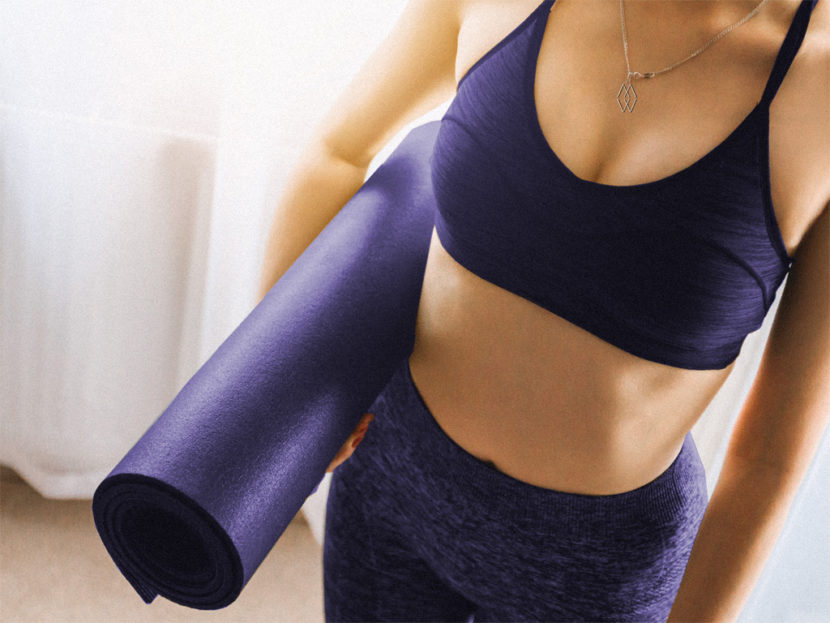
The gym is sort of like a second home to me. Having an active gym membership for over 18 years, I’ve spent a lot of time there. My favorite part about it is the environment it brings. The noise and energy of hundreds of people that have one thing in common: actively trying to improve their health and physique. I’ve worked in this industry for over twelve years — ten of them at Life Time. And I’ve definitely noticed some common themes when it comes to working out at the club that might not be optimal for the results they’re looking for.
1. NO WARM UP
Don’t underestimate the power of a warm up — even if you feel like you don’t have time. Most folks will tell me because their time is limited, that they’d rather focus on burning as many calories as possible (on cardio equipment) during their time allotment and completely avoid the warm-up or cool-down.
But if you knew that a proper warm-up will not only prevent injuries but also prime those muscles to burn maximal fat calories during the workout, you’d prioritize it right? The warm-up also plays a major role in how effective your workout session is — possibly doubling the amount of fat you burn.
We often recommend completing a metabolic warm up to get your blood flowing and gradually increase your heart rate. You spend 8–10 minutes starting at an easy walking pace and gradually increase your heart rate by training in each of the five heart rate zones (2 minutes per zone).
PRO TIP: You could also consider a dynamic warm-up in which you do a series of continuous movements done in a controlled manner. It helps to raise your core body temperature, increases blood flow to muscles and improves your range of motion. A couple of examples include: glute bridges, cat-cow and hip openers with rotation. Check out the how-to right here.

2. NO PLAN
While working in the club, I used to love standing near the top of the stairs and welcome members to the floor. But when I would greet and ask them what their plan was for the day, nine times out of ten they didn’t know, and I’d often get the response, “probably just some cardio” as they went to go find a treadmill.
Showing up to the club without a plan is sort of like showing up to the grocery store without knowing what you need at home for food. It usually won’t lead to the result you are looking for. Now I’m all about incorporating some “unstructured” movement into your routine and have found on really stressful days, a low-intensity walk on the treadmill is plenty and perfect for my day. But for most other instances, we want to make sure we’ve got a progressive and structured workout.
As you begin a workout routine, you should view it as a process. Most often with my clients’ programs, I would get them into the proper mindset for 8–12 weeks. Now some goals will take longer, but within that timeframe, if they followed the plan, they could see some significant change.
PRO TIP: Each week, spend a couple minutes planning out your upcoming week’s workout. A good balanced routine for fat loss should include 2–3 sessions of full-body strength training along with a few sessions of cardio (both HIIT and lower intensity). If you’re not a fitness expert, consider hiring a trainer or a coach to help you create a plan that’s specific for you. That way you’ll not only know exactly what you need to do when you get to the club, but how to progress and challenge yourself to create change.

3. TOO MUCH DOWN TIME (OR NOT ENOUGH)
Usually, this is a sign of a routine that’s not challenging you enough. Although breathing and rest in between sets are super important, and can help optimize your workout, too much of it usually means you’re spending too much time letting your heart rate recover. A good rule of thumb: if you’re able to talk or text on your phone during a workout, it’s probably too easy. I’ve also seen over the last few years (as smartphones have emerged) the “scrolling” of social media as one sits on a machine. Don’t get trapped into that — it often becomes a distraction creating less efficiency in your workout because you’re not focusing on your heart rate increasing (and decreasing with recovery).
PRO TIP: Use a heart rate monitor. It not only gives you direct feedback when your body has recovered (and you’re ready for that next round or set), but it also keeps you in check with how many fat and calories you’ve burned during your session.
4. POOR FORM
I can’t tell you how many times I’ve had members complain to me that they know squats/lunges are important (and impactful), but they avoid them because they have knee pain (even though they don’t have any history of knee problems or injuries). Usually, this is due to poor form and putting too much stress on your quadriceps (and not on your glutes or hamstrings). Other culprits include shoulder pain from poor formed push-ups/planks or back pain stemming from poorly formed movements on machines (for example, too big of an arch in your back while doing lat pull-downs). Even worse, we see a lot of folks trying to do the “sexy” exercise (found on social media or in a magazine) that often leads to injury due to poor form.
PRO TIP: If you find yourself in pain often doing foundational movements, consider working with a Fitness Professional, even if it’s just for a couple of sessions to figure out what proper technique looks like for the core and foundational movements.
Utilize the mirrors around the club so you can actually watch yourself doing these moves. That way you can see if your back is too arched or if you are putting weight in the right section of your leg, etc.
5. LACK OF TRACKING
I love this school of thought: You can’t change what you don’t measure. It holds true with many habits, including exercise. Tracking not only helps you stay consistent — but also shows your journey.
I mentioned earlier that I always ask my clients to create a plan and program for 8–12 weeks, and you should be recording each workout along the way. That way you can see what you did last time in terms of reps or weight and continue to progress and challenge yourself.
I see folks all the time able to get through 10–12 reps of an exercise with pure ease. And if that’s happening to you, that’s a signal that you need to progress (increase the weight). Or even worse, they go too hard resulting in being sore for a week after one workout (often this can lead to injury or illness). Every workout should be challenging (but not necessarily punishment), and tracking can really help you to find out where your sweet spot is at this point in time.
PRO TIP: I’m a little old school, but I like pen and paper. There are plenty of apps out there too, where you can record your workouts and view your history. Your program should have you progressing each week, getting stronger and a little faster.
Of course, at the end of the day, I’ll always remind my clients that exercise is a stimulus (it signals your muscles and your heart that you need to change). But proper nutrition (including plenty of protein, nutrient and vitamin-rich plants and supplements) along with quality sleep (7–8 hours per night and uninterrupted) are critical to recovering from those training sessions and allowing your body to show the results you are looking for.
If you have any questions about your training or nutrition program, feel free to reach out to our virtual coaching team at coaching@lt.life. And if you’re not considering a Personal Trainer but interested in trying an effective foundational program, our next complimentary Lean + Tone class begins in August, and you can sign up here.
In health, Anika Christ – Director – Digital Programming & Events – Life Time Weight Loss
This article is not intended for the treatment or prevention of disease, nor as a substitute for medical treatment, nor as an alternative to medical advice. Use of recommendations in this and other articles is at the choice and risk of the reader.


